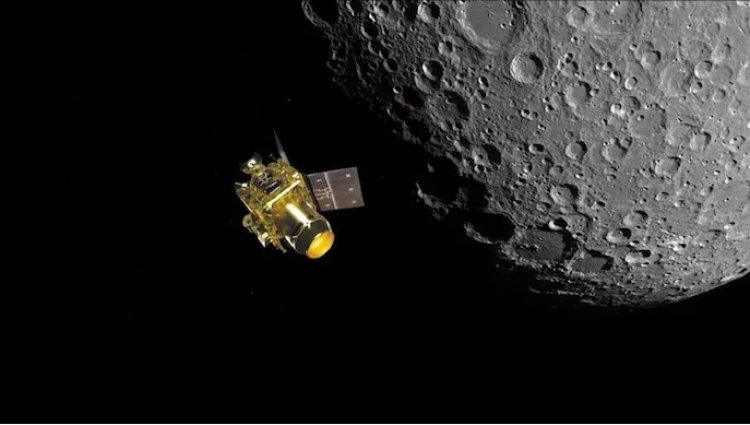Chandrayaan 3 lander separates from propulsion module ahead of soft landing: 10 key points.
The race to the south pole of the Moon is quickening with India's Chandrayaan-3 and Russia's Luna-25 gearing up for lunar landings next week.

Before its planned soft landing on the surface of the Moon on August 23, the Chandrayaan 3 spacecraft's lander module has successfully split from the propulsion module, the Indian Space Research Organisation reported on Thursday. The lander module, which is made up of the lander (Vikram) and the rover (Pragyan), will now be lowered to an orbit that brings it closer to the surface of the Moon.
The Chandrayaan 3 mission is intended to accomplish what its predecessor, Chandrayaan 2, was unable to: soft land and rove on the lunar surface. Particularly, the race to the Moon's south pole has aroused worldwide interest, with Russia's Luna-25 and India's Chandrayaan-3 preparing to land on the moon the next week
These are the top 10 things you should be aware of:
1. The fifth manoeuvre leads to the separation of the lander module.
Launched on July 14 and entering lunar orbit on August 5, the Chandrayaan 3 spacecraft underwent orbit reduction procedures on August 6, 9, and 14. On August 16, a spacecraft completed its fifth and last lunar-bound orbit manoeuvre successfully. On August 17, it was reported that the lander module had separated from the propulsion module.
2. Chandrayaan 3 was launched towards the moon in a catapault manoeuvre.
Since its launch on July 14, ISRO has manoeuvred the Chandrayaan 3 spacecraft five times to place it in ever-distancer orbits. Then, on August 1, the spacecraft was successfully launched from Earth's orbit towards the Moon in a crucial movement known as a slingshot.
3. On August 23, a soft landing attempt will be made on the lunar pole.
The lander is anticipated to undergo a "deboost" (the act of slowing down) after separation in order to be in an orbit where the Perilune (closest point to the Moon) and Apolune (farthest point from the Moon) are 30 km and 100 km, respectively. On August 23, a soft landing attempt will be made from this orbit on the south pole of the Moon.
4. The main issue is to reduce the lander's velocity before the final landing.
The process of lowering the lander's velocity as it begins its descent from a height of 30 km to the final landing (position) is crucial, according to ISRO Chairman S Somanath, and the ability to switch the spacecraft from a horizontal to a vertical direction is the "trick we have to play" in this situation. "We had the issue with Chandrayaan-2 here last time," Somanath said.
5. Regarding Chandrayan 3
Chandrayaan-3 will demonstrate end-to-end capability in safe landing and roving on the Moon's surface after Chandrayaan-2 (2019). It consists of a lander module, an indigenous propulsion module, and a rover with the aim of creating and showcasing new technology needed for interplanetary missions.1
6. SHAPE payload information on Chandrayaan's propulsion module
The Spectro-polarimetry of Habitable Planet Earth (SHAPE) payload, which studies spectral and polarimetric measurements of the Earth from lunar orbit, is carried by the propulsion module in addition to carrying the lander and rover configuration up to around 100 km lunar orbit.
7.What follows the separation of the lander and module?
Chandrayaan-1's project director, Dr. M. Annadurai, stated that once the propulsion module bids the lander farewell, the lander will undergo its initial inspections. "Other sensors as well as the lander's four main thrusters, which will allow for a smooth landing on the lunar surface, need to be tested. The lander will then follow its own trajectory to reach an orbit that is close to 100km by 30km, and early morning movements will begin on August 23 from that point.
8. What is the mission's goal for Chandrayaan 3?
The goals of Chandrayaan-3's mission are to demonstrate a safe and soft landing on the moon's surface, to show how the lunar rover works, and to carry out in-situ scientific investigations. The lander will be able to make a soft landing at a chosen lunar location and install the rover, which will conduct in-motion chemical analysis of the Moon's surface. Both the lander and the rover are equipped with scientific packages that will conduct lunar surface research.
9. India and Russia's lunar race
Both Chandrayaan-3 from India and Luna-25 from Russia are preparing to land on the moon the following week, and each mission has important consequences beyond the exciting competition in the heavens. The dates of their landings -- August 21–23 for Chandrayaan-3 and August 23–24 for Luna-25—are close together and may perhaps coincide, which has piqued attention around the world. On August 10, Luna-25 was launched by Russia, which is embarking on a historic return to lunar exploration after almost 50 years since the legendary Soviet-era Luna-24 mission in 1976.
10. Why moon missions are crucial
Because of its prospective water resources and distinctive geological features, the lunar south pole is very intriguing. Future lunar expeditions, such as the forthcoming Artemis-III mission by the US space agency NASA, which wants to send people to the Moon after a five-decade break, depend on the largely unexplored region.













